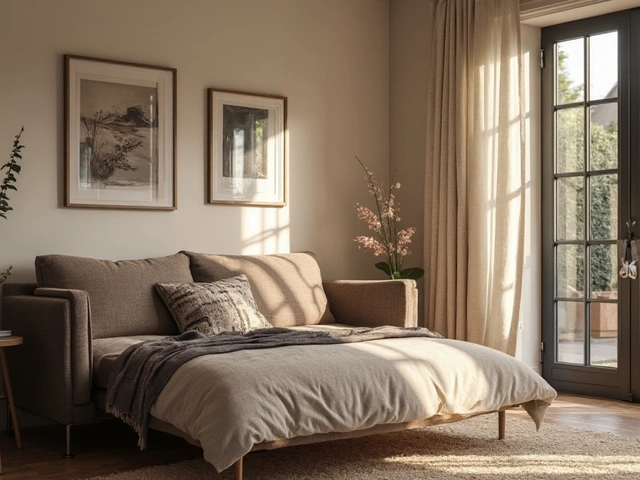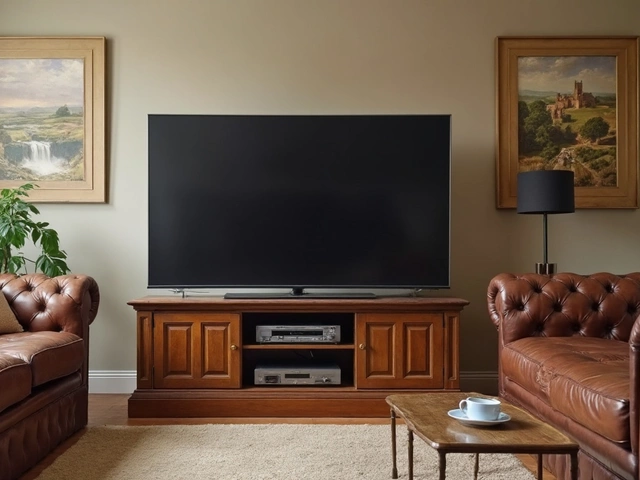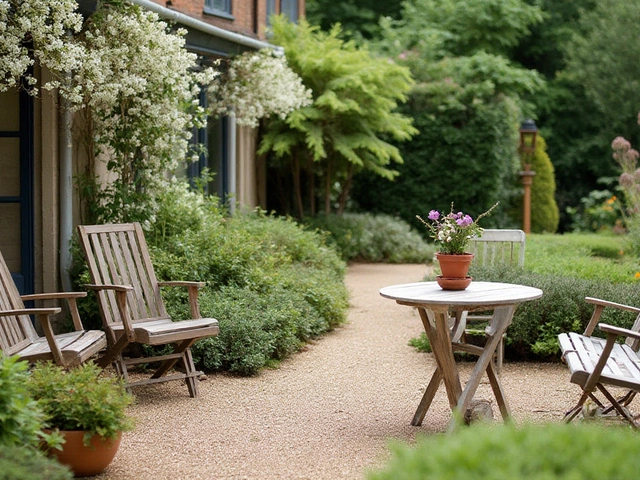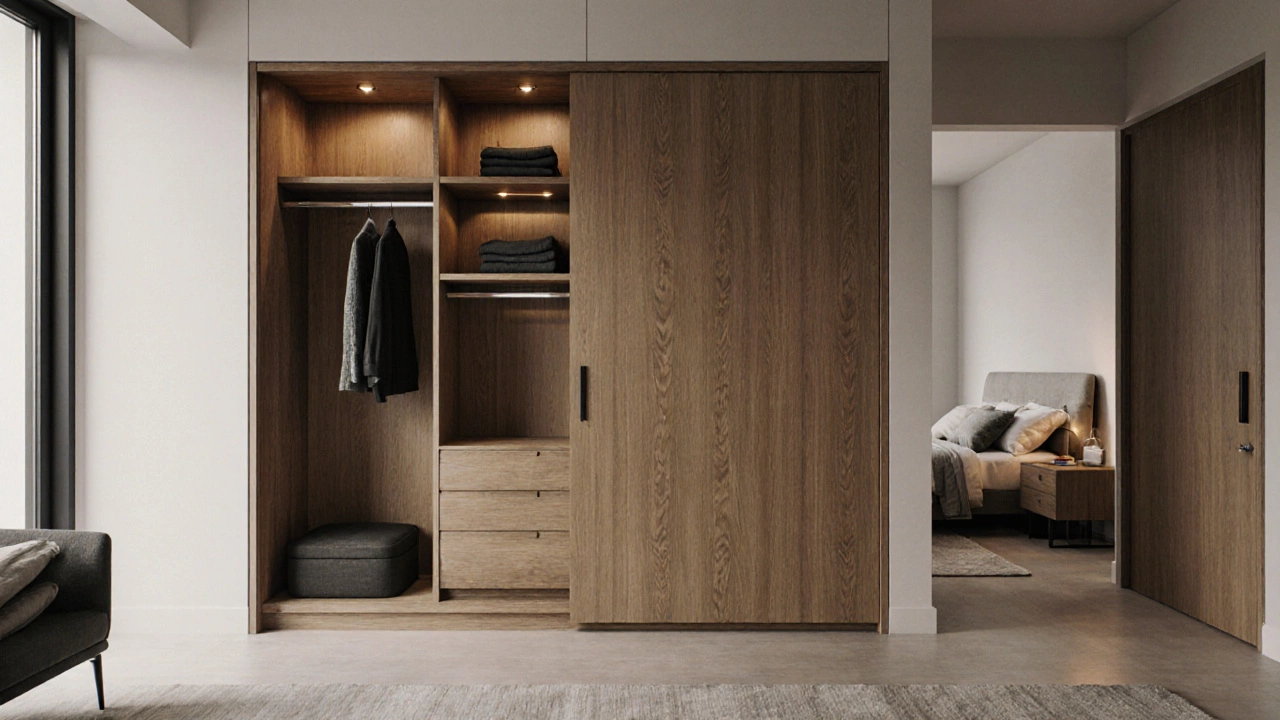 16
Nov,2025
16
Nov,2025
Ever walked into an American home and wondered why everyone calls it a closet instead of a wardrobe? You’re not alone. If you’re from the UK, Australia, or anywhere else where "wardrobe" is the go-to word for a tall, freestanding storage unit for clothes, the American version can feel confusing. But here’s the truth: Americans don’t really use the word "wardrobe" at all-not for the kind of thing you’d find in a British bedroom. They call it a closet. And it’s not just a difference in vocabulary. It’s a difference in design, space, and culture.
What Americans Actually Use
In the United States, the standard piece of furniture for storing clothes is built into the wall. It’s not a movable cabinet with doors. It’s a recessed space, usually lined with rods, shelves, and sometimes drawers, tucked right into the bedroom’s structure. This is called a closet. And it’s not a luxury-it’s the norm. Almost every bedroom in a new American home comes with one. The average American closet is about 24 inches deep and stretches from floor to ceiling. Walk-in closets? Those are common too, especially in homes built after 2000. Some even have island units, lighting, and mirrors built right in.
So when an American says "I need to clean out my closet," they’re not talking about a freestanding wooden box. They’re talking about a built-in room within a room. If you showed them a traditional British-style wardrobe-a tall, solid piece with hangers inside-they’d probably call it a "chest of drawers with doors" or just "a piece of furniture."
Why the Difference Exists
The reason Americans don’t use wardrobes comes down to space and construction. American homes, especially since the post-WWII housing boom, were built with standardized, modular designs. Built-in closets were cheaper and faster to install than adding freestanding furniture. They also saved floor space, which mattered as suburban homes got smaller but needed to feel bigger. By the 1950s, closets became a selling point. Real estate listings started advertising "walk-in closets" and "double closets" as premium features.
In contrast, British and Australian homes-many of them older, with thinner walls and less structural flexibility-weren’t built with closets in mind. Instead, freestanding furniture like wardrobes made more sense. They could be moved, replaced, or upgraded without remodeling walls. That tradition stuck.
When Americans Do Say "Wardrobe"
Don’t get it twisted-Americans aren’t completely unfamiliar with the word. You’ll hear "wardrobe" used in a few specific situations:
- When talking about fashion or style: "Her wardrobe is full of vintage pieces." Here, "wardrobe" means the entire collection of clothes someone owns, not the piece of furniture.
- In high-end furniture stores: Some luxury brands sell freestanding wooden units labeled as "wardrobes," especially if they’re imported or designed to look like European pieces.
- For very large storage units: If you see a massive, floor-to-ceiling unit with sliding doors and internal lighting, it might be called a "wardrobe" in a catalog-but it’s still rare.
Most Americans, when they need to store clothes, will say "I’m putting my shirts in the closet." They won’t say "I’m putting my shirts in the wardrobe." If you did, they’d likely assume you meant a piece of furniture you bought from IKEA or a furniture store-and even then, they’d probably still call it a "closet" in their head.
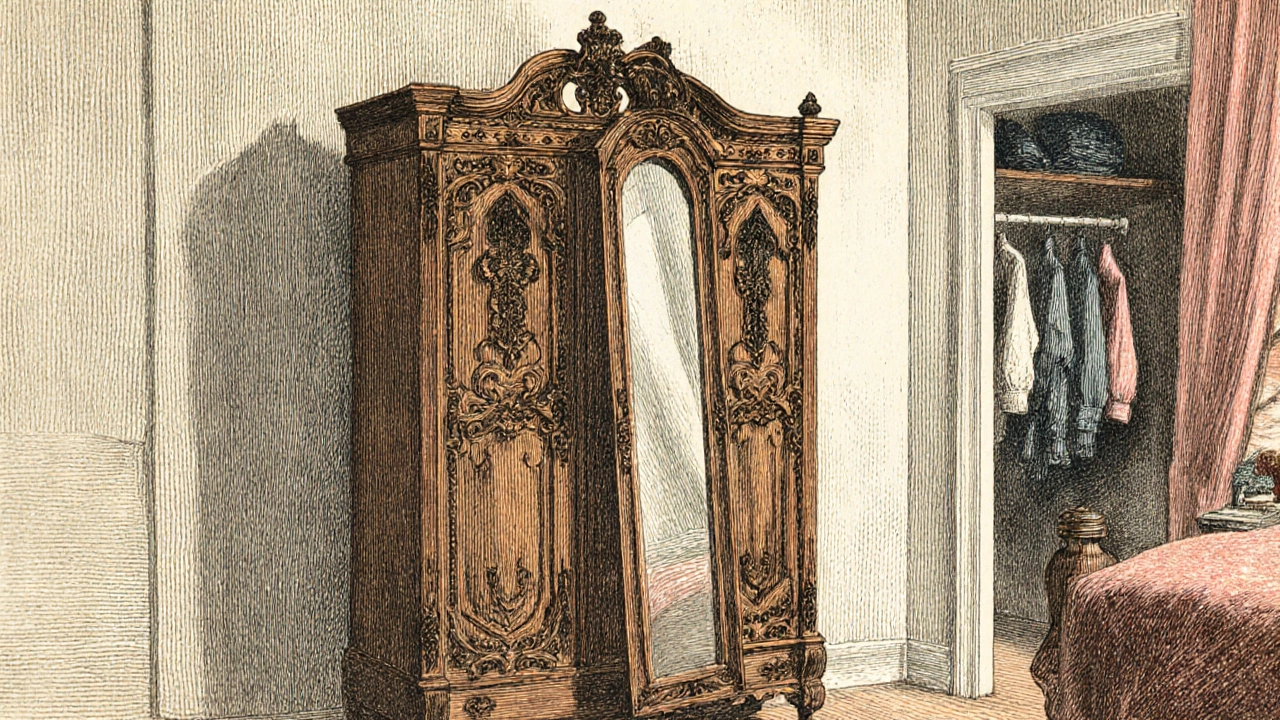
What About Other English-Speaking Countries?
It’s not just Americans. Australians, New Zealanders, and South Africans mostly say "wardrobe"-just like the British. But even within those countries, things are changing. Newer homes built in the last 15 years often include built-in closets, especially in urban areas. So you’ll hear younger people say "closet" when they’re referring to the built-in space, and "wardrobe" when they mean the freestanding unit.
In Canada, it’s mixed. English-speaking Canadians tend to use "closet" like Americans, especially in newer homes. But older homes and rural areas might still have wardrobes. French-speaking Canadians? They say "armoire," which is the same word used in France.
What Should You Call It?
If you’re shopping for clothes storage in the U.S., here’s what works:
- Use the word closet when talking to real estate agents, interior designers, or home builders.
- If you’re buying a freestanding unit, search for "freestanding clothing storage unit," "clothing armoire," or "closet organizer." "Wardrobe" might bring up results, but you’ll get fewer options.
- On Amazon or Wayfair, typing "wardrobe" returns mostly European-style units. Typing "closet" returns built-in systems, sliding doors, and modular racks.
Bottom line: If you’re in the U.S. and you want the kind of storage Americans use, go for a closet. If you want the kind you’re used to, you’ll need to buy a freestanding armoire or wardrobe-and be prepared to explain what it is.
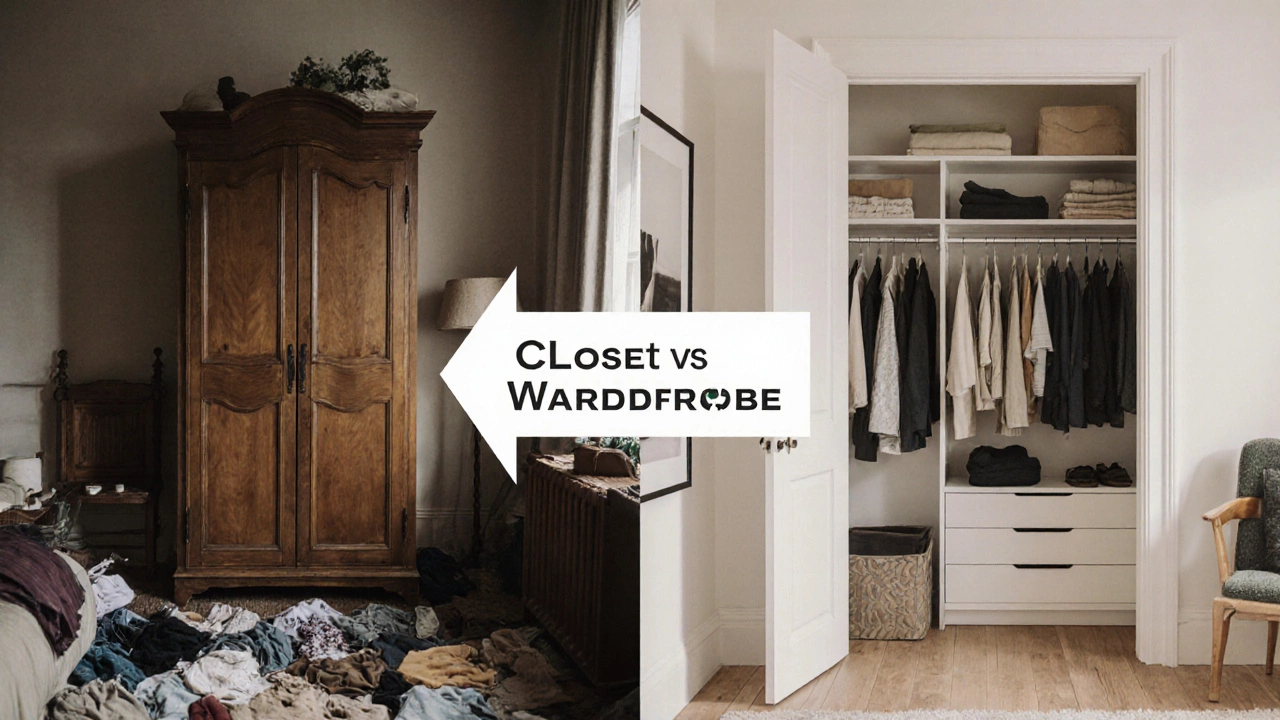
Real-Life Examples
Take Sarah, a British expat living in Chicago. She moved into a new apartment and assumed the empty space next to her bed was a wardrobe. She bought a tall wooden unit and placed it there. Her American roommate was confused. "Why are you putting that there? There’s a closet right behind you." Sarah looked around. Sure enough, there was a 6-foot-tall, 3-foot-deep built-in closet with two rods and a shelf. She’d walked past it every day without noticing.
Or James, who grew up in Melbourne and moved to Atlanta for work. He asked his landlord for a wardrobe. The landlord showed him a closet with a door. James thought it was a joke. "That’s it?" he asked. The landlord replied, "Yep. That’s the wardrobe. We call it a closet here."
These aren’t odd stories. They’re common. The language gap isn’t just about words-it’s about expectations. Americans don’t think of clothing storage as something you buy. They think of it as something the house comes with.
What’s Changing?
As global design trends influence American homes, you’re starting to see more freestanding storage units in urban apartments and rental spaces. Tiny homes, studio apartments, and modern lofts often lack built-in closets. That’s where wardrobes are making a quiet comeback. Brands like IKEA and BoConcept now sell "wardrobes" designed for small spaces, with mirrored doors and internal organizers.
But even then, the labeling is tricky. An IKEA catalog might call it a "wardrobe," but the product page says "clothing storage with doors." The American customer still clicks on "closet" filters. The word "wardrobe" is slowly becoming a design descriptor, not a functional term.
Final Take
So what do Americans call wardrobes? They call them closets. And if you’re trying to navigate American homes, furniture stores, or real estate listings, that’s the word you need to learn. It’s not just about vocabulary. It’s about understanding how space is built, how culture shapes function, and why the same object can have two entirely different meanings across the ocean.
If you’re moving to the U.S., don’t bring a wardrobe unless you have a specific reason. You’ll likely find the closet already there-and it’ll be bigger than you think.
Do Americans use the word "wardrobe" at all?
Yes, but rarely for furniture. Americans use "wardrobe" to describe a person’s collection of clothes, like "She has a great wardrobe." When it comes to storage, they almost always say "closet." You’ll only hear "wardrobe" used for freestanding units in high-end stores or imported furniture.
Is a closet the same as a wardrobe?
Functionally, yes-they both store clothes. But structurally, no. A closet is built into the wall and is part of the home’s structure. A wardrobe is a freestanding piece of furniture you buy and move. Americans use closets. People in the UK, Australia, and elsewhere often use wardrobes.
Can I buy a wardrobe in the U.S.?
Yes, but you’ll need to look for "freestanding clothing storage," "armoire," or "wardrobe" in furniture stores. Major retailers like IKEA, Wayfair, and West Elm sell them. But they’re not common in new homes. Most Americans don’t need them because their homes already have built-in closets.
Why do American homes have closets but not wardrobes?
American homes were built after the 1940s with standardized designs that included built-in closets as a cost-effective way to save space. Freestanding furniture like wardrobes were seen as unnecessary once closets became standard. Over time, closets became expected-like plumbing or electrical outlets.
Are wardrobes coming back in the U.S.?
In small spaces like studios, apartments, and modern lofts, yes. As more people live in places without built-in closets, freestanding storage is making a quiet return. But it’s still a niche choice. Most Americans still prefer built-in solutions.

